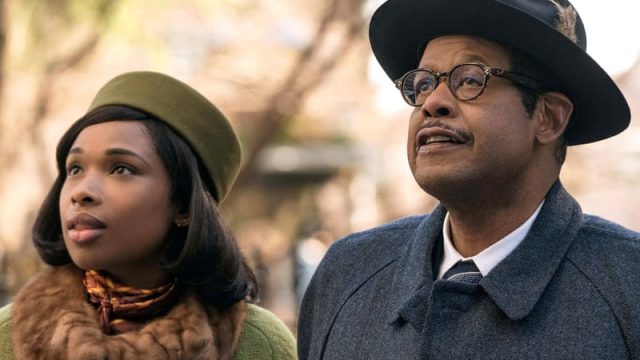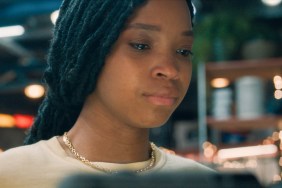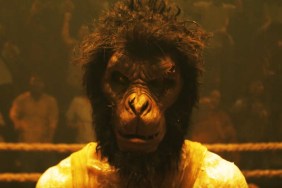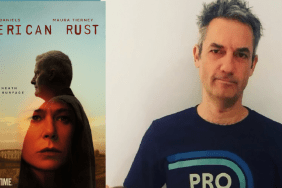The Aretha Franklin biopic Respect, starring Academy Award winner Jennifer Hudson, is currently available to own on Blu-ray/DVD and digital platforms, and ComingSoon was able to speak with the film’s production/set designer, Ina Mayhew, about her work on the acclaimed pic.
Mayhew is known for her work with Spike Lee, Tyler Perry and has recently been praised for her visionary work on Respect by Architectural Digest, Film & Furniture, and Arch Daily.
Jeff Ames: What led you to a career in production/set design?
Ina Mayhew: I actually started in high school. I was exposed to theater as a child and for some reason I just loved the idea of set design. Both of my parents were artists and painters, so I started in the world of art anyway. And I started as a painter myself. But I was really attracted to set design and that’s what I went to college for. So, I kind of really started when I was 15. I loved it and I never stopped.
I didn’t know a lot about film design until I saw something being filmed on my campus and that was it for me. That’s what I wanted to do. I always wanted to be a set designer. Initially, I thought I wanted to be a painter, but I just loved the idea of scale. And film was even better because you have the whole surrounding environment, which worked for me as a visual storyteller. That was it for me, right from the beginning.
I’m lucky to have parents who encouraged me to do whatever I wanted to do and really supported me being a set designer and supported me as I transitioned into film design.
Was there a particular film where it all came together for you?
You know, I had gone out to Los Angeles with a friend of mine to paint scenery, because I was a scenic artist as well. While I was in Los Angeles, I was exposed to commercials and music videos. So, I got a glimpse of what that world was. I wasn’t sure how to pursue it, but I was in college with a bunch of filmmakers, one of them was Charles Lane, and I was able to work on a film with him. So, I was kind of creeping into the world of production design and really trying to watch and be aware of what that meant. I was an assistant to a designer, so that part of it I understood, but I kind of talked my way to working on Sidewalk Stories with Charles Lane. I don’t know if I knew what I was doing at the time. I kind of took my theater skills and applied them to film, but I somehow figured it out. I had enough bits and pieces exposure to that world; and the time I spent in LA, I was involved in all kinds of media design. So, for me it was an easy transition. So, that was my first movie, Sidewalk Stories, which saw a huge amount of success at the time.
The journey was certainly longer than I wanted it to be. I was like, “When’s my next movie?” And they were like, “It doesn’t work that way!” (Laughs) But I feel like I was bitten by the lucky bug. I felt very prepared, one because I really studied hard as a painter and artist. I was doing models, set dressing, all the things you had to do as a set designer. I was one of those people that did everything – I did hair and makeup, props. I so loved that world that I was just going to do anything. You know, you lie your way into things — “Sure, I can do that!” I got hired on crazy jobs. I had a friend who was doing hair and makeup on Broadway and asked me to join and I was like, “Sure, ok!” I was the kid that did everything. I just really wanted to be creative.
RELATED: Wesley Snipes Lends Support to Mahershala Ali Playing Blade
With Respect, what drew you to this particular film? Are you looking for projects like this that are based in a certain era you weren’t familiar with?
One of things I desperately wanted to do was a period film. I had always done little period pieces in other projects. As a theater person, that’s what you study. You study periods, palettes, and styles — and obviously, I’m a big color person. But I just loved this era. It was a little bit of a journey to get to where the design was in the film. I had worked with Liesl Tommy on a couple other things, Queen Sugar and Dolly Parton’s Heartstrings, so we had a little bit of a relationship. The minute she called me to do it and explained her direction on the project, I was like, “Oh, yeah!” It was another one of those surprises where I’m going, “I would love to do it, that’s so fun and challenging.” I had never done an entire feature in period. I had done Dolly Parton, this television show — and what was interesting about that series was every episode was a different era. One was a western, one was the 40s, one was contemporary, so that was challenging going from one to the other in such a short amount of time. But that series also prepared me to do something that takes place in the 50s. I love the 60s and the 70s anyway, I had a lot of research on that era, I love those movies, and I love the idea of the Civil Rights movement which was a passion of mine along with black culture. You do your best to put those elements into the film and Aretha Franklin’s life certainly allowed all of those pieces visually to be added to her world because she was a woman of the 60s, and unconsciously part of the woman’s movement, Black Panthers — she was a part of all of that.
I loved the actual style of the time and once we decided to go in that direction, once we said we wanted to feel upscale and we wanted to show that she was surrounded by this kind of wealth; and to also show that there was this thriving black middle class in the 50s … all of those elements drove the direction. Any project that you do, even if you think you know it, I still did tons of research just to make sure I was accurate. And, again, that comes from early education of really wanting to thoroughly understand an era and understand the design of the time; and also, you surround yourself with people who know some of that like a set decorator — my decorator, we were the two craziest people ever. I loved it! I was so glad I had a partner who was as insane about getting all the details absolutely right. It’s fun to search and shop and look online and be excited — “I got my fabric, yay!” I just love that era. It was kind of the beginning of contemporary design too. As a designer, that’s your catnip! (Laughs) I just love every minute of it.
Was there a specific aspect of the era you discovered that you applied to the film?
I knew a little bit about the furniture, but I had never dove into that period — silhouettes, for example. I was like, “Was that of that time? Great! I love it.” The discovery of how complete that time was. How every aspect … the house in particular is where we really got to really stretch those muscles about all the nutty things — handles on doors, hardware — and it just kind of kept on going. I had never really studied New York architecture at that time and it was really a surprise to me, things like the Woolworth Building and Columbia Records. I didn’t know much about recording studios either, so all of that was an interesting learning experience.
Sometimes you dive too deep into that rabbit hole. When we were in New York, I really wanted to find the actual buildings of that time. It was a happy surprise to discover New York has all of that. Those are things I never really pay attention to. They’re there, but you never know why they’re there; or how would I use that in this film. So, I dove much deeper into things I kind of knew. I feel like an actual expert now. Every block we shot on in New York, I’m like, “Oh my God, those building were there then?” You’re surrounded by stuff all the time and you see it but you never really discover it.
RELATED: Are You Happy Now Trailer Starring Ismenia Mendes & Josh Ruben
Are there any specific details you want audiences to pay attention to when they watch the film?
The LA house is an obvious showstopper. Everyone gets that. I don’t know if there’s enough dynamics in the recording studios, but we spent a lot of time on the boards and the actual soundproofing and the Muscle Shoals Sound Studio. But, in the end, I will say that our favorite set was Aretha Franklin’s house. I want people to pay attention to the contrast of the world that she lived in — subtle wallpaper, things in the kitchen. I’m a hardware freak, so all the doors and handles and hinges. I want everyone to pay attention to the layers that are in every set. You know, like look at all of those elements that are there.
One of the fun things I love that Liesel used was I had to do this weird transition hallway from one part of the house to the other as a connective tissue. The interesting things that are in houses at the time — phones, lamps, little tables, and chairs — she really used all of that and even went into the sunroom. I hope people really see the richness of that world. The apartment and where she lived, specifically the two main houses — her childhood home and the LA house — and how she kind of took the same world and just moved it to her own life and upgraded it all. I really want audiences to pay attention to palette and color; and how color was really used then. I think people think that was a really muted world when it wasn’t. It was really rich with lots of gold color. It was nice to be able to collaborate with the costume designer to make sure our palettes blended together, that was also an important part. But pay attention to all of those little details.
Thankfully, we had a DP and a director who had those moments to linger on a detail that tells the story of a character. That’s always wonderful. We always have to take some license, but the overall palette … you have to have the details because that completes the total story.










